Understanding UPJ Obstruction: Insights and Management
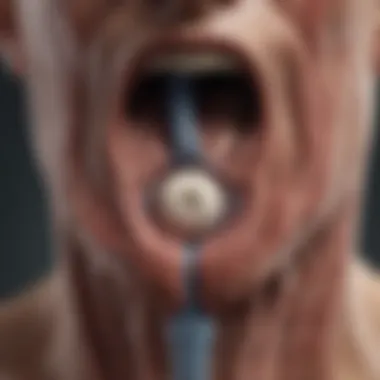
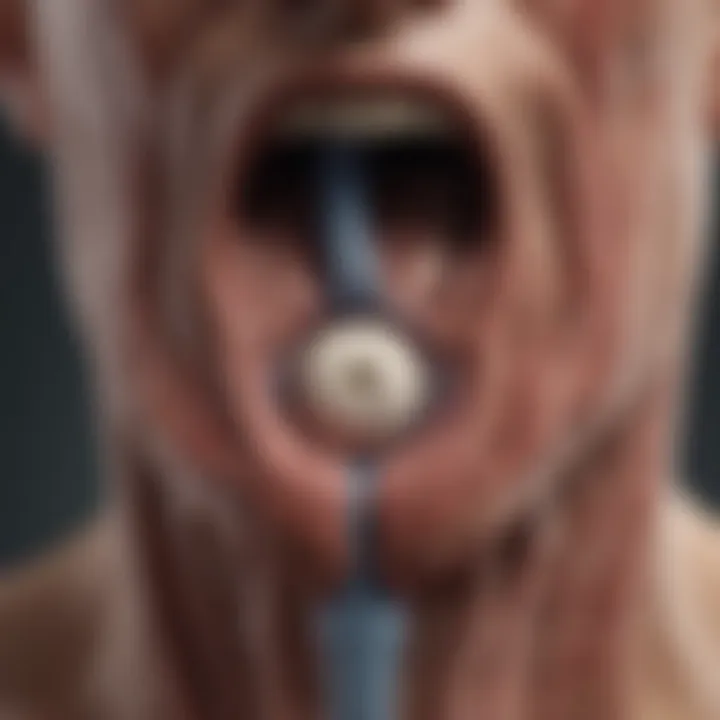
Intro
Ureteropelvic Junction (UPJ) obstruction poses significant challenges in the field of urology. The interplay between anatomical anomalies and physiological disturbances at the junction of the renal pelvis and ureter can lead to various clinical manifestations. Understanding the intricacies of this obstruction goes beyond mere diagnostics; it encompasses a thorough examination of the underlying mechanisms, risk factors, and treatment options available.
Background and Context
Overview of the research topic
The UPJ is a crucial area within the urinary system where urine transitions from the kidneys to the ureter. When there is an obstruction at this junction, it can result in hydronephrosis and potential renal impairment. This topic is pertinent not only for urologists but also for those engaged in public health and medical research. Recognizing the symptoms, understanding the causes, and being aware of effective management strategies can greatly enhance patient outcomes.
Historical significance
Historically, UPJ obstruction was often associated with congenital malformations. The understanding of this condition has evolved, with advancements in diagnostic imaging and surgical techniques. Earlier, open surgeries were the norm; however, minimally invasive approaches have gained traction over the years. The shift in treatment modality highlights the significant progress made in urological practices.
Key Findings and Discussion
Major results of the study
Recent studies have indicated that UPJ obstruction can stem from various etiological factors, including vascular compression, intrinsic ureteral abnormalities, and external masses. Each factor has its implications on the clinical presentation and the subsequent management strategies employed. It is essential to delineate these causes to tailor treatment effectively.
Detailed analysis of findings
Research underscores the importance of renal function assessment in patients with UPJ obstruction. Compromised renal function can potentially escalate the urgency for intervention. Evaluating renal function through imaging modalities like ultrasound or CT scans allows for a more comprehensive understanding of obstruction severity.
"Accurate diagnosis leads to better management strategies, ultimately enhancing patient outcomes."
In terms of management, contemporary approaches range from conservative monitoring to surgical intervention. Both pyeloplasty and endopyelotomy are viable options, depending on the obstruction's nature and the patient's overall health condition. Understanding these interventions requires an appreciation of their respective indications, contraindications, and recovery trajectories.
The discourse surrounding UPJ obstruction reflects ongoing efforts to refine clinical practices. Professionals in urology must stay attuned to the latest research and technological advancements to navigate this complex landscape effectively. This information not only aids in clinical decision-making but also ensures that patient care remains at the forefront of practice.
Overview of UPJ Obstruction
Understanding Ureteropelvic Junction (UPJ) obstruction is vital for both medical professionals and students keen on exploring urological disorders. UPJ obstruction is a condition that affects the flow of urine from the renal pelvis to the ureter, causing potential complications such as renal dysfunction. This section will provide a clear understanding of UPJ obstruction's definition, significance, and prevalence in the population, establishing a context for more detailed discussions in later sections.
Definition and Significance
UPJ obstruction refers to a blockage at the junction where the renal pelvis meets the ureter. This blockage can be either congenital, arising during fetal development, or acquired throughout life due to various factors such as infections, trauma, or malignancies. Its significance in clinical practice lies in the potential for kidney damage and associated symptoms, which can substantially impact a patient’s quality of life. Recognition and accurate diagnosis are crucial for timely management.
Epidemiology of UPJ Obstruction
The prevalence of UPJ obstruction varies depending on geographical and demographic factors. Studies suggest that it occurs predominantly in children, but it can also affect adults. The condition is typically more common in males than females, with estimates indicating a ratio of 2:1. Understanding the epidemiological landscape is essential to ensure appropriate screening and intervention strategies are put in place. Various studies have reported an incidence rate reaching up to 1 in 1500 births, signifying its relevance in pediatric urology.
"Recognizing the clinical implications of UPJ obstruction early on can lead to better patient outcomes and management options."
In summary, having a comprehensive insight into the definition and epidemiology of UPJ obstruction lays the foundation for exploring anatomical considerations, etiology, and clinical presentations in subsequent sections.
By understanding these dimensions, healthcare providers can approach the diagnosis and treatment of UPJ obstruction with improved acuity and effectiveness.
Anatomical Considerations
The anatomical details concerning the ureter and renal pelvis are central to comprehending UPJ obstruction. Understanding these structures provides context for the clinical challenges and interventions related to this condition. Each aspect of anatomy influences not only the pathophysiology of the obstruction but also the strategies employed in diagnosis and treatment.
Structure of the Ureter and Renal Pelvis
The ureter is a muscular tube that transports urine from the kidneys to the bladder. It measures approximately 25 to 30 centimeters in length and has three primary segments: the abdominal part, pelvic part, and intramural portion. Its structure consists of three layers: an inner mucosal layer, a middle muscular layer, and an outer fibrous layer. These layers play a vital role in peristalsis, which helps propel urine toward the bladder.
The renal pelvis is the funnel-shaped structure located at the upper end of the ureter, where urine collects before entering the ureter. Anatomically, the renal pelvis is divided into major and minor calyces, which directly collect urine from the renal papillae of the kidney. The junction where the renal pelvis narrows to form the ureter is known as the ureteropelvic junction. This area is particularly prone to obstructions, necessitating a detailed understanding of the anatomy to inform clinical decisions.
Key aspects of the Ureter and Renal Pelvis:
- Length and Shape: This impacts urine transport efficiency.
- Muscle Layers: Critical for the function of urine movement.
- Renal pelvis structure: Influence on urine drainage.
Understanding these elements can lead to better diagnosis and more effective treatment.
Variations in Anatomy
Anatomical variations of the ureter and renal pelvis can significantly affect the presentation and management of UPJ obstruction. In some patients, the ureter may have atypical or unusual angulations. This can create additional risk for obstruction due to factors such as external compression or intrinsic narrowing.
Variations can include differences in the length of the ureter, relationships with adjacent structures, or unexpectedly located blood vessels that might complicate surgical intervention. Recognizing these variations is essential before any surgical procedure, especially in cases of pyeloplasty, which aims to relieve the blockage at the UPJ.
Common Variations
- Ureteral Duplication: Presence of two ureters.
- Vascular Anomalies: Abnormal blood vessels near the pelvic region.
- Structural Anomalies: Ureteral kinks or narrowing at the junction.
Imaging studies such as CT scans and MRIs can help identify these variations, leading to tailored treatment approaches for each patient. Understanding the full range of anatomical factors is critical for the successful management of UPJ obstruction.
The complexity of UPJ obstruction is intimately linked to anatomical considerations. A thorough comprehension of the normal and variant structures facilitates optimal patient outcomes.
Etiology of UPJ Obstruction
The etiology of UPJ obstruction is a critical aspect to grasp in addressing this complex condition. Understanding the origins helps healthcare professionals to tailor diagnosis and treatment strategies effectively. It also sheds light on patient risk factors and potential progression of the disease. By differentiating between congenital and acquired causes, clinicians can predict outcomes and plan interventions more accurately, enhancing patient care.
Congenital Factors
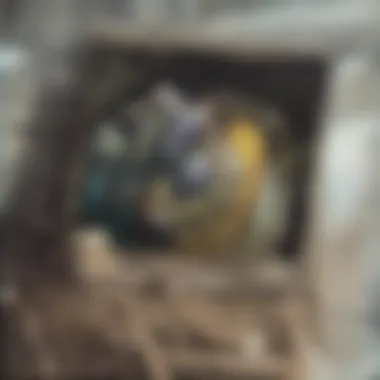

Congenital factors are among the primary contributors to UPJ obstruction. These are structural anomalies present at birth that impede normal urinary flow. A common cause is the abnormal anatomical development at the ureteropelvic junction. This can stem from factors such as:
- Abnormalities in the muscle fibers: The muscle at this junction can be disorganized, leading to improper relaxation and contraction.
- Presence of a fibrous band: Sometimes, a fibrous band may form across the junction, causing obstruction.
- Alterations in ureteral length: Short ureters can lead to kinking, further obstructing the flow.
Understanding these congenital elements not only assists in early diagnosis but also evaluates the urgency for surgical intervention. Recognizing these factors highlights the need for pediatric assessment and potential early management strategies.
Acquired Causes
Acquired factors also play a significant role in the development of UPJ obstruction. Unlike congenital causes, these emerge after birth, often due to external influences. Common acquired causes include:
- Kidney stones: These can form and obstruct the junction, leading to significant symptoms and renal impact.
- Tumors: Neoplasms either in the kidney or surrounding structures can compress the ureter, causing blockage.
- Trauma: Injury to the abdomen or lower back can result in scarring or other structural changes that lead to obstruction.
These factors necessitate a thorough medical history and physical examination. Identifying acquired causes is vital for timely intervention and addressing any underlying conditions that might contribute to worsening renal function. Overall, dissecting the etiology of UPJ obstruction enables targeted management, improving patient outcomes.
Pathophysiology
Pathophysiology is a crucial aspect in understanding UPJ obstruction. This section focuses on how the obstruction impacts renal function and the progression of the obstruction itself. It is essential to grasp these elements to comprehend the clinical implications and management strategies.
Impact on Renal Function
The obstruction at the ureteropelvic junction significantly hinders the flow of urine from the renal pelvis to the ureter. This improper flow can lead to increased pressure in the renal pelvis, known as hydronephrosis. The renal tissue becomes distended, and the normal functioning of the kidney is compromised. Over time, this can result in renal atrophy.
Factors to consider include:
- Severity: A complete obstruction may lead to more rapid deterioration compared to partial obstruction.
- Duration: Prolonged prominence of urine backflow increases the likelihood of irreversible kidney damage.
- Compensatory Mechanisms: The unaffected kidney may partially take over the burden, but this is not sustainable over long periods.
Electronic monitoring and imaging techniques, such as ultrasound and CT scans, can help assess the degree of hydronephrosis, guiding treatment protocols effectively.
Progression of Obstruction
Over time, UPJ obstruction can lead to a series of complications if not adequately addressed. As urine accumulates, the internal pressure escalates, causing a vicious cycle. The body may try to compensate, but often, the obstruction will continue to worsen.
Key points about the progression include:
- Gradual Nature: The symptoms may not be immediate. Patients often experience a slow onset of signs, which can lead to late diagnosis.
- Potential for Secondary Effects: Secondary kidney damage may occur due to infections or kidney stones forming in the dilated renal pelvis.
A timely diagnosis can halt or slow the progression, thus preserving renal function.
"Understanding the dynamics of pathophysiology in UPJ obstruction is pivotal for optimizing patient outcomes."
Clinical Presentation
Understanding the clinical presentation of UPJ obstruction is crucial because it drives both diagnosis and treatment strategies. Recognizing the symptoms early can lead to timely intervention, which is vital for preserving renal function. Knowing how this condition manifests helps healthcare professionals effectively assess and manage patients. The distinct symptoms and age-related presentations of UPJ obstruction warrant a thorough exploration to improve patient outcomes.
Symptoms and Signs
UPJ obstruction presents a variety of symptoms that can vary significantly among individuals. Some common symptoms include:
- Flank pain: Often described as a colicky pain, it typically occurs due to the buildup of urine above the obstruction, which may worsen with increased hydration.
- Hematuria: Blood in the urine can indicate a more significant issue and should be investigated promptly.
- Nausea and vomiting: These may be present, especially during severe episodes of pain. These symptoms arise from changes in kidney function and the body's attempt to signal distress.
- Urinary frequency or urgency: Patients may experience alterations in their urinary habits, particularly if the obstruction leads to infection or irritation.
In children, the symptoms might manifest differently. Infants, for instance, may show nonspecific signs like irritability or feeding issues. Therefore, it is essential for caregivers to recognize these symptoms and seek medical advice.
Early recognition of symptoms can facilitate prompt diagnosis and guide treatment choices, preventing long-term damage to renal tissues.
Age-Related Manifestations
The age of the patient often influences how UPJ obstruction presents. In neonates and infants, symptoms can be subtle. These age groups often display a lack of appetite, failure to thrive, or even abdominal distension. The symptoms may go unnoticed until significant renal impairment occurs.
In older children and adults, symptoms become more pronounced and align closer with the classic presentations described earlier. Interestingly, older adults might experience less severe symptoms due to natural reductions in renal function over time, leading to a deceptive sense of normalcy.
In summary, age significantly impacts symptom presentation in UPJ obstruction. Awareness of these differences is crucial for healthcare providers to tailor their diagnostic approaches and treatment strategies, ultimately improving care across all age groups.
Diagnostic Approaches
In the context of UPJ obstruction, diagnostic approaches hold a crucial role in effective management and treatment of this condition. Detecting the obstruction accurately and promptly can significantly influence patient outcomes. Clinicians utilize various methods, including imaging techniques and functional assessments, to gain insights into the severity and implications of the obstruction.
Imaging Techniques
Ultrasound
Ultrasound serves as a first-line investigation when assessing suspected UPJ obstruction. Its advantage lies in being a non-invasive technique that does not involve radiation exposure. Ultrasound excels in identifying hydronephrosis, which is often present in cases of UPJ obstruction. Its real-time capability allows for dynamic assessment of renal urine flow.
A key characteristic of ultrasound is its ability to provide immediate insight into renal anatomy and function. One unique feature is Doppler imaging, which can further enhance the evaluation of renal blood flow. While ultrasound is beneficial due to its safety and quick results, it can be operator-dependent. This means that the outcomes may vary based on the technician's experience.
CT Scan
CT scan is another pivotal imaging method that contributes to diagnosing UPJ obstruction. It provides detailed cross-sectional images, enabling enhanced visualization of the urinary tract. A significant characteristic of CT is its ability to differentiate between causes of obstruction, such as calculi or anatomical anomalies. This imaging technique is particularly useful in complex cases where ultrasound results may be inconclusive.
The unique feature of a CT scan is its rapid acquisition of images, making it suitable for emergency settings. Furthermore, the high-resolution capabilities offer a clearer picture of structures surrounding the obstruction. However, the need for contrast agents introduces potential risks, including allergic reactions and kidney function impairment. Thus, a careful consideration of risks versus benefits is essential when opting for this diagnostic approach.
MRI
Magnetic Resonance Imaging (MRI) appears as a valuable alternative in certain scenarios, particularly in patients with contraindications for CT. MRI provides excellent soft tissue contrast, revealing detailed information about the renal pelvis and surrounding tissues. An important characteristic of MRI is its non-invasive nature and absence of ionizing radiation, which makes it safer in repetitive evaluations or sensitive populations.


The unique feature of MRI lies in its ability to depict the anatomy of the urinary system in three dimensions. This comprehensive view aids in diagnosing complex anatomical variations contributing to obstruction. However, MRI is often less accessible and more time-consuming compared to ultrasound and CT. Also, its higher cost can limit its widespread use.
Functional Assessment
Functional assessment is imperative to analyze the impact of UPJ obstruction on renal function. Various methodologies can be employed, such as diuretic renography to evaluate the functionality of kidneys. Assessing function helps to determine the urgency and type of intervention needed. Specifically, renal scintigraphy can yield quantitative data regarding renal uptake and excretion, guiding clinical decision-making.
These diagnostic approaches create a holistic view, which is vital for following management options. As each technique presents its strengths and limitations, a combination may sometimes be necessary to achieve accurate diagnosis and effective treatment for patients with UPJ obstruction.
Management Strategies
Management strategies for UPJ obstruction are fundamental in ensuring optimal patient outcomes. These strategies encompass a range of approaches that aim to alleviate the obstruction, preserve renal function, and minimize the risk of complications. Implementing these strategies necessitates a thorough understanding of both the physiological impact of the obstruction and the patient's individual circumstances. The two primary management avenues are conservative management and surgical options, each carrying distinct implications.
Conservative Management
Conservative management is often the first line of treatment for UPJ obstruction. This approach may involve monitoring the condition and implementing lifestyle modifications. In some cases, medication can help manage symptoms related to urinary obstruction. The benefits of conservative management are significant, as they allow for non-invasive treatment options while closely observing the disease progression.
A few important considerations for conservative management include:
- Regular follow-up appointments to assess renal function and obstruction severity.
- Encouragement of hydration to help support renal function.
- Monitoring of blood pressure, as it may be influenced by renal health.
While conservative management may not resolve the obstruction completely, it can aid in determining the best timing for potential surgical intervention, ensuring that the patient receives appropriate care based on their unique circumstances.
Surgical Options
When conservative management does not suffice, surgical options become necessary. Surgical management is typically recommended when there is progressive renal deterioration or significant symptoms. Two predominant surgical strategies for managing UPJ obstruction include pyeloplasty techniques and endourological approaches.
Pyeloplasty Techniques
Pyeloplasty is the surgical reconstruction of the ureteropelvic junction to relieve obstruction. The main characteristic of pyeloplasty is its ability to restore normal urine flow while preserving renal functionality. This technique is recognized for its effectiveness and long-term success rates in treating UPJ obstructions. The unique feature of pyeloplasty is that it addresses the root cause of obstruction rather than treating symptoms alone.
Some key advantages of pyeloplasty include:
- High success rates: Many studies indicate that pyeloplasty has a success rategreater than 90% in relieving UPJ obstruction.
- Durable outcomes: Long-term follow-up has shown sustained renal function after surgery.
However, the disadvantages can include surgical risks such as bleeding, infection, or complications from anesthesia. Ultimately, pyeloplasty remains a popular choice due to its potential for effective, long-term resolution of UPJ obstruction.
Endourological Approaches
Endourological approaches offer a minimally invasive alternative to traditional surgery for UPJ obstruction. This technique utilizes specialized instruments introduced via the urethra to address the obstruction. Its main characteristic is the reduced recovery time compared to open surgical procedures, making it a favorable option for many patients.
The unique feature of endourological approaches is their ability to minimize tissue trauma, which usually leads to shorter hospital stays and quicker patient recovery. Some advantages include:
- Less postoperative pain: Patients often experience relatively minor discomfort after the procedure.
- Faster recovery: Many patients can resume normal activities soon after the procedure.
Nonetheless, the disadvantages may consist of limited applicability in complex obstructions, potentially reducing its effectiveness in some cases. Despite these challenges, endourological techniques are an important part of the current management strategies for UPJ obstruction.
Overall, choosing between conservative management and surgical options requires a thorough risk-benefit analysis tailored to each patient's specific clinical scenario. By integrating these management strategies with ongoing assessment and patient education, healthcare professionals can ensure improved outcomes for individuals facing UPJ obstruction.
Surgical Outcomes and Implications
In the context of UPJ obstruction, surgical outcomes play a pivotal role in understanding the effectiveness of treatment options. The quality of surgical intervention directly influences the patient’s recovery, long-term kidney function, and overall quality of life. Numerous studies have established that successful surgical outcomes are associated with decreased complications, improved renal function, and enhanced patient satisfaction. The implications of these outcomes extend beyond individual cases and contribute to broader discussions about best practices in urological surgery.
Success Rates
The success rates of surgical treatment for UPJ obstruction are largely determined by the technique employed and the specific characteristics of the obstruction. Pyeloplasty remains the gold standard for surgical intervention. Recent data indicates that minimally invasive approaches, such as laparoscopic pyeloplasty, report success rates exceeding 90%. Open pyeloplasty also shows impressive outcomes, but the choice between these methods can depend on the patient’s condition and the surgeon’s expertise.
Factors influencing success rates include:
- Age of the patient: Younger patients often experience better outcomes due to more resilient tissue.
- Type of obstruction: Congenital obstructions typically yield higher success rates than those acquired.
- Surgeon experience: Higher volumes of procedures performed by surgeons correlate with improved outcomes.
"A successful surgical intervention not only resolves the obstruction but also preserves renal function, which is critical for patient health and well-being."
Long-Term Follow-Up
Long-term follow-up is crucial after surgical management of UPJ obstruction. Monitoring renal function is essential to ensure that the surgery has achieved its intended goal. Regular follow-up can help identify any recurrence of obstruction or other complications early.
Follow-up protocols often include:
- Imaging Studies: Ultrasounds or CT scans are commonly used to assess the surgical site and kidney function at intervals post-surgery.
- Renal Function Tests: Blood and urine tests help evaluate the effectiveness of the intervention and detect any underlying issues.
Most patients should be monitored for at least five years post-surgery. Research indicates that with proper follow-up care, patients maintain improved renal function and quality of life. This emphasizes the importance of ongoing monitoring and support for those who have undergone treatment for UPJ obstruction.
Complications Associated with UPJ Obstruction
Ureteropelvic Junction (UPJ) obstruction is not only a condition requiring management but also a source of significant potential complications. Understanding these complications is crucial for both medical practitioners and patients alike. The consequences of UPJ obstruction extend beyond renal function. Complications can affect surgical outcomes and, ultimately, the quality of life for patients. This section delves into potential surgical complications and the overall impact on a patient’s day-to-day life.
Potential Surgical Complications
Surgical intervention is often required for UPJ obstruction, especially when conservative management fails. Several potential complications can arise during or after surgical procedures such as pyeloplasty or endourological approaches. These include:
- Infection: Surgical procedures may risk infections, requiring antibiotic therapies.
- Bleeding: Hemorrhage can occur, necessitating further surgical intervention in some cases.
- Ureteral Injury: The delicate ureter can be damaged during surgery, leading to significant morbidity.
- Stenosis: Recurrent narrowing may occur post-surgery.
Postoperative management is a critical component in minimizing these complications. Continuous monitoring and prompt intervention can help address minor issues before they evolve into serious complications.
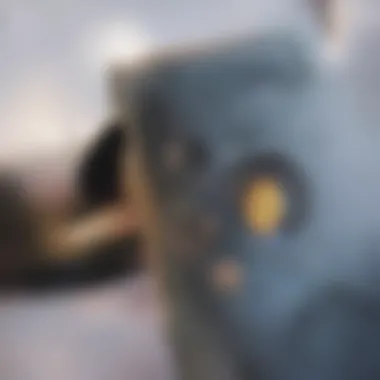
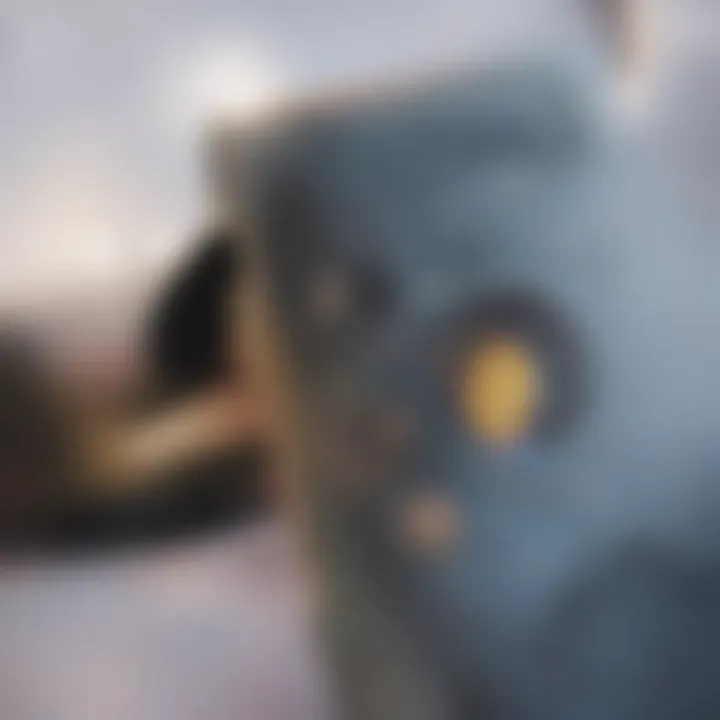
"Surgical outcomes are influenced by recognizing and addressing potential complications at an early stage."
Impact on Quality of Life
UPJ obstruction can adversely affect a patient's quality of life, both before and after treatment. The symptoms related to the obstruction—such as flank pain, nausea, and recurrent urinary tract infections—contribute significantly to discomfort and disability. After surgical management, patients may continue to experience:
- Chronic Pain: Some individuals report persistent pain even post-surgery.
- Psychological Effects: Anxiety regarding health and future surgical outcomes can burden patients.
- Activity Limitations: Physical activities may be restricted due to pain or ongoing health issues.
Patients must be informed that the path to recovery may not be instantaneous and that ongoing follow-up is essential for ensuring their well-being. Understanding these implications is vital for patients as they navigate their journey with UPJ obstruction.
Recent Advances in Research
The field of urology continues to evolve with significant advancements that enhance our understanding and management of Ureteropelvic Junction (UPJ) obstruction. Understanding recent developments is crucial as they offer new possibilities for improving patient care. The importance of these contributions cannot be overstated, as they refine both surgical techniques and diagnostic methods, which in turn can lead to better outcomes for patients.
Innovative Surgical Techniques
Recent research has introduced several innovative surgical techniques aimed at treating UPJ obstruction. One notable advancement is the robot-assisted pyeloplasty. This minimally invasive approach provides greater precision and control during the surgical procedure. Surgeons are able to navigate complex anatomical structures with enhanced visualization, which reduces recovery time and minimizes postoperative complications. This technique is particularly beneficial for pediatric patients, where traditional open surgeries may pose higher risks.
Other surgical innovations include endoscopic techniques, which are gaining popularity for their reduced invasiveness. Procedures such as laparoscopic pyeloplasty allow surgeons to recreate the normal anatomy without the need for large incisions. These techniques can result in lower rates of complications and shorter hospital stays. The focus on refining surgical methods indicates a clear trend towards approaches that prioritize patient safety while improving surgical success rates.
Emerging Diagnostic Tools
The landscape of diagnostic imaging for UPJ obstruction is also undergoing transformation. Traditional methods such as ultrasound and CT scans are now complemented by advanced imaging technologies. One significant development is the use of magnetic resonance urography (MRU), which provides detailed images of the renal collecting system without the radiation exposure associated with CT scans. MRU can identify subtle anatomical variations that may contribute to obstruction, thus guiding surgical planning more effectively.
Moreover, molecular imaging techniques, which utilize targeted contrast agents, are being explored. These tools could allow for more accurate assessments of renal function and perfusion, thereby enhancing the understanding of the obstruction’s impact on the kidneys. Such advancements hold promise for early detection and targeted interventions, which are pivotal for preserving kidney function in affected individuals.
Research in both surgical techniques and diagnostic methods is critical. It leads to improved practices that can have a direct impact on patient outcomes.
As we continue to explore these advances, it is evident that ongoing research plays an essential role in shaping the future of UPJ obstruction management. A focus on innovation allows healthcare professionals to deliver tailored treatments that address the unique needs of patients. This connection between research and clinical application is what drives progress in the management of UPJ obstruction.
Future Directions in UPJ Obstruction Management
The management of UPJ obstruction continues to evolve with new insights and technologies. Understanding the future directions in this area is crucial for optimizing patient outcomes and improving diagnostic and therapeutic approaches. By focusing on genetic research and non-invasive techniques, the field aims to refine how UPJ obstruction is diagnosed and treated. These advancements will benefit patients by providing more personalized care options and reducing complication rates associated with traditional surgical interventions.
Exploration of Genetic Factors
Recent studies suggest that genetic predispositions may play a role in the development of UPJ obstruction. By exploring these genetic factors, researchers hope to uncover underlying mechanisms that cause this condition. Understanding these mechanisms can lead to targeted therapies that address the root causes rather than just the symptoms.
Genetic markers may also help in predicting which individuals are at higher risk of developing UPJ obstruction. As a result, healthcare providers can initiate preventative measures earlier.
More research is needed in this area, and future work may involve whole-genome sequencing and gene expression profiling to identify potential biomarkers.
A better grasp of genetic details related to UPJ obstruction can potentially shift treatment paradigms significantly.
Advancements in Non-Invasive Techniques
The trend toward non-invasive techniques in medicine is particularly relevant for UPJ obstruction management. Innovative imaging methods, such as advanced ultrasound modalities, offer detailed visualization of the renal anatomy without ionizing radiation. This is especially beneficial for pediatric patients. Non-invasive catheter-based approaches also show promise, allowing for interventions without open surgery.
Technology is driving these advancements. For example, artificial intelligence can enhance image interpretation and functional assessments. This can lead to quicker and more accurate diagnoses, facilitating timely intervention.
In summary, the focus on non-invasive options not only improves patient comfort but also reduces the risks associated with traditional surgical procedures.
"When patients are offered non-invasive options, their anxiety decreases, and they can engage more actively in their treatment journey."
Exploring both genetic factors and advancing non-invasive techniques reflects commitment to better management of UPJ obstruction, paving the way for future healthcare innovations.
Ending
The conclusion serves as a critical component of this article, summarizing essential insights on UPJ obstruction while reinforcing its significance in clinical practice. It encapsulates the myriad aspects covered, from the fundamental understanding of the condition to up-to-date management strategies. One of the main benefits of a clear conclusion is its ability to crystallize information, allowing readers to synthesize what they've learned and apply it to their own contexts, be it research or clinical settings.
Summary of Key Insights
In this exploration of UPJ obstruction, several key points emerge as particularly noteworthy. The condition encompasses both congenital and acquired factors, illustrating the complexity associated with its pathophysiology. Effective management relies heavily on a comprehensive understanding of the obstruction's etiology.
- Imaging Techniques: Utilizing ultrasound, CT scans, and MRI can enhance diagnosis accuracy.
- Treatment Options: Both conservative management and surgical techniques, such as pyeloplasty, have vital roles in restoring function.
- Long-Term Outcomes: Understanding the implications of potential complications and ensuring follow-up care is necessary for optimal patient outcomes.
Overall, these insights provide a solid foundation for professionals in urology, fostering informed decisions in practice.
Importance of Ongoing Research
Continued research in UPJ obstruction is paramount. Advancements in genetic understanding, non-invasive diagnostic techniques, and surgical methods can lead to improved patient care and outcomes. Investigating the genetic factors associated with this condition may unlock new preventative strategies and targeted therapies. Furthermore, innovations in non-invasive techniques could reduce patient recovery times and surgical complications.
Ongoing investigation is crucial to translating scientific discoveries into clinical practice. It encourages the exploration of individualized approaches to management that consider the unique circumstances present in each patient.
"Innovative research is not just an extension of knowledge; it is the pathway to transforming practice in urology, particularly regarding complex conditions like UPJ obstruction."
References and Further Reading
In the pursuit of deeper comprehension of UPJ obstruction, it is paramount to acknowledge the significance of well-curated references and further reading. A robust foundation of literature forms the bedrock for understanding the nuances associated with this condition. Academic papers, clinical studies, and compelling case reports provide essential insights diverse enough to address manifold aspects of UPJ obstruction.
Importance in Research and Education
Utilizing recognized sources augmenting academic credibility leads to a more profound understanding of urologic challenges. High-quality references foster a deeper analysis into:
- Epidemiology: Insights into the prevalence and demographic variances.
- Pathophysiology: Detailed examinations into mechanisms underlying UPJ obstruction.
- Management Strategies: Current standards and evolving techniques in treatment approaches.
Moreover, for students and professionals seeking to grasp the multifaceted nature of urological disorders, recommended readings guide them through established theories and practices. Each resource provides continuity and supports the integration of new information into existing knowledge frameworks.
Considerations for Further Study
When looking into this complex subject, readers should prioritize:
- Peer-Reviewed Journals: Articles from reputable journals such as the Journal of Urology or European Urology ensure reliable data.
- Comprehensive Textbooks: Standard texts in urology offer foundational knowledge as well as advanced insights.
- Online Medical Libraries: Databases like PubMed and Google Scholar are invaluable for accessing recent studies and reviews.
"Up-to-date resources not only illuminate current knowledge but also highlight areas needing further exploration.”
Benefits of Ongoing Engagement with Literature
Regularly consulting updated references promotes awareness of:
- Innovative Techniques: As surgical methods continue to evolve, contemporary literature highlights breakthroughs in management strategies.
- Clinically Relevant Case Studies: Real-world applications enrich theoretical understandings and guide clinical decisions.
- Research Directions: Emerging studies signal where future explorations are needed, providing a roadmap for academic inquiry.







